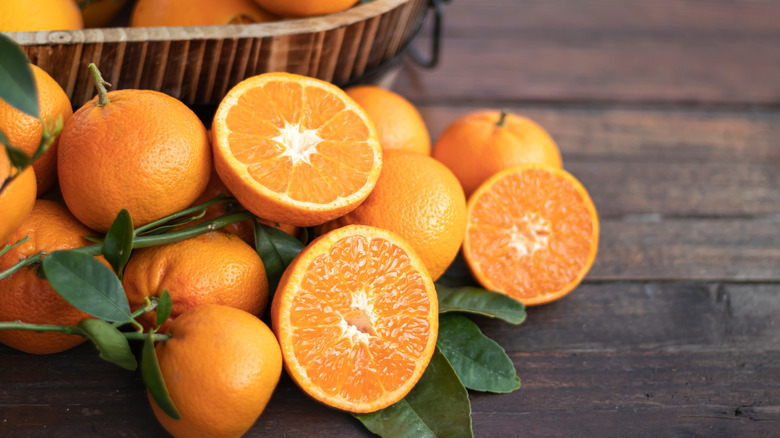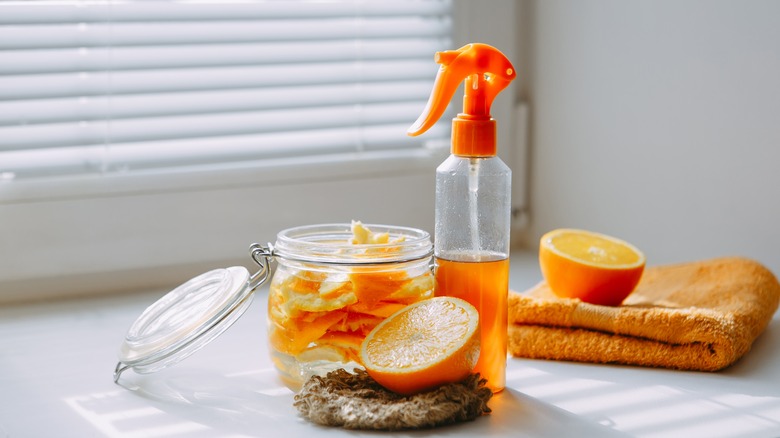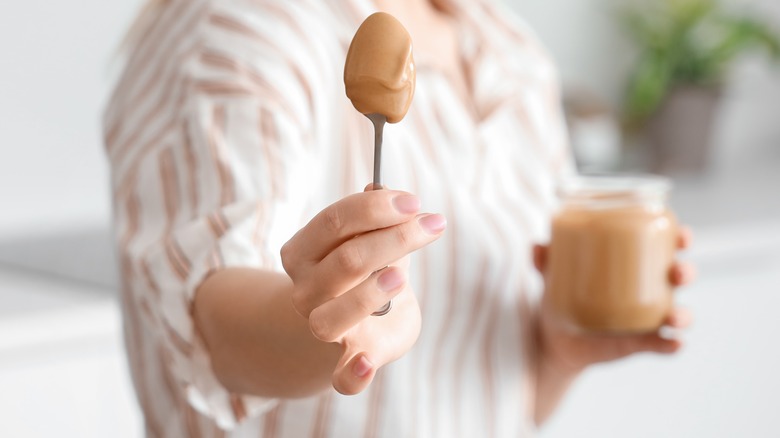Orange Slices Are The Secret To Cleaning Sticky Label Residue
Few things are as frustrating as the sticky label residue that stubbornly clings to your shiny new pots, pans, glassware, and cutlery. Despite rinsing them with hot water, running them through the dishwasher, and even scrubbing them by hand, the residue persists. However, if you have an orange or even just some orange essential oil, there's no need to fret — the citrus will come to your rescue! After peeling your orange, take a piece of the peel and rub the inside all over the adhesive residue. Wipe the surface with a cloth, and you'll see the sticky gunk come right off.
If you examine many adhesive remover products on the market, you'll notice that a significant number include oranges as an ingredient. This is because the oil found in oranges is a natural degreaser, making even the actual fruit an effective solution. Additionally, the fibrous texture of the orange peel helps remove the sticky residue, and because the fruit is gentle and non-abrasive, you don't have to worry about damaging fragile surfaces. The same applies to essential oil — simply apply it to the label, let it soak into the residue for a few minutes, and then wipe away all the gooey remnants.
An orange can get rid of more than sticky labels
The chemical limonene, often referred to as d-limonene, found in orange rind can do more than remove sticky residues; it can also cut through grease, make surfaces sparkle, and serve as an antibacterial and deodorizer in your kitchen. However, that doesn't mean you can rub the inside of an orange peel over everything — as you would on a label — and expect optimal results. Depending on what you need to clean, there are different ways to utilize an orange.
For cutting through grease, you'll want to use the outside or the rind of an orange. If it's silverware you'd like to polish, then it's the white pith inside that you'll need. The pith is also what you should use to clean wooden surfaces, but make sure to douse it with a few drops of vinegar first. Similarly, oranges can wipe off just about any stain, but they work best when mixed with vinegar. Soak orange peels in white vinegar for two weeks, then use the solution as a cleaning spray around the kitchen. Conversely, orange peels are most effective for polishing copper utensils when dipped in salt, as salt acts as an abrasive scrub. (Pro tip: You can also use ketchup to clean your copper pans.) Oranges can even help eliminate hard water stains on kitchen sinks and faucets — simply rub the peel over the stain as you would with sticky label residue!
More ways to clean label residue
If you don't have essential orange oil or even an orange on hand, there are plenty of other pantry staples that can still tackle a sticky label. For example, if you've managed to remove most of the label and just need to eliminate that adhesive layer — or if the label is thin — a scoop of peanut butter will do just as well as an orange. Smear the peanut butter over the gummy area and scrape it off after it has soaked for about five minutes. You could even use mayonnaise instead of peanut butter, but the former may take longer to work through the adhesive, and could potentially damage a painted surface. Alternatively, you could use baking soda to naturally clean thin layers of residue by making it into a paste with coconut oil.
However, if the label is very thick or its adhesive is too strong, you'll need a more heavy-duty solution. In such cases, cover the residue with a paper towel soaked in vinegar for five minutes or longer, depending on the strength and thickness of the label. Once you remove the towel, you'll see both the label and the residue come right off with it, making you wonder why you ever struggled to clean that in the first place!



